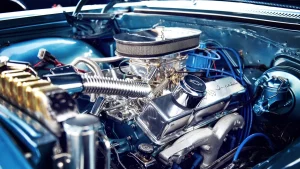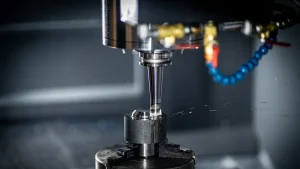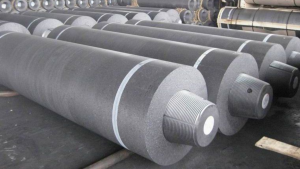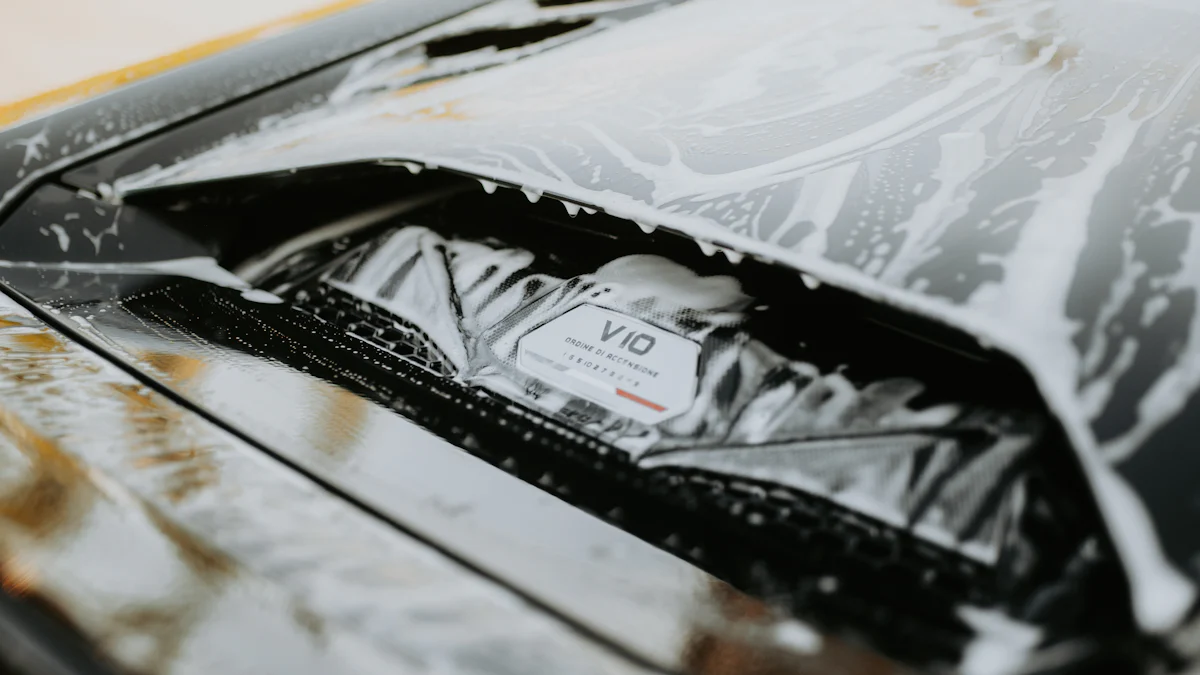
Pyrolyticカーボンコーティング技術は、画期的な進歩で材料科学を再定義しました。 この革新的なコーティングは熱安定性、化学抵抗および機械強さを含む例外的な特性を、表わします。 現代の課題に対処する能力は、高性能な用途に欠かせないものとなっています。 薬、航空宇宙、電子機器などの産業は、耐久性、効率性、機能性を高めるために、この技術を取り入れています。 極端な条件で優れた性能を発揮することで、重要な分野に革命をもたらし、技術の進歩を促す.
要点
- Pyrolyticカーボンコーティングは、熱安定性、耐薬品性、機械的強度を提供し、さまざまな産業で高性能なアプリケーションに最適です.
- 化学蒸気沈着(CVD)プロセスは均一pyrolyticカーボンコーティングを作成するために重要であり、厚さおよび質を精密に制御できるようにします.
- これらのコーティングは、人工心臓弁や整形外科装置などの医療インプラントの安全性と長寿を強化し、生体適合性です.
- CVDの最近のイノベーションは、スケーラビリティと効率性を向上させ、産業用途向けの高品質のコーティングの生産を可能にします.
- テーラード pyrolytic カーボンコーティングはマイクロエレクトロニクスおよび生物医学工学のような分野の特定の必要性に性能および機能性を高めることができます満たすことができます.
- その利点にもかかわらず、高い生産コストや複雑な幾何学上の均一なコーティングを達成するなどの課題は、より広範な採用のために対処する必要があります.
- 氷結カーボンコーティング技術の革新を促進し、複雑な課題に取り組むためのコラボレーションを促進し、新しいアプリケーションのロックを解除するために不可欠です.
Pyrolyticの理解 カーボンコーティング技術
Pyrolyticカーボンコーティングの原則
Pyrolyticカーボンの主特徴そして特性.
Pyrolyticカーボンは特性の独特な組合せによる際立っています。 極度な温度で確実に実行できる熱安定性を発揮します。 その耐薬品性は腐食性物質を含む粗い環境に露出したときに耐久性を保証します。 また、材料は、高強度のアプリケーションに適した、印象的な機械的強度を発揮します。 さらに、その生体適合性は、特に人間の組織と相互作用するインプラントやデバイスのために、医療用途でそれを好む選択肢をしました。 これらの特徴は堅く、信頼できるコーティングを要求する企業のための多目的な材料としてpyrolyticカーボンを置きます.
化学蒸気蒸着(CVD)プロセスの概要.
化学蒸気沈着(CVD)プロセスは、pyrolyticカーボンコーティングを作成する上で重要な役割を果たします。 この技術は制御された環境の高温で炭化水素ガスの分解を伴います。 このプロセス中に放出されるカーボン原子は基質に沈み、均一および密なコーティングを形作ります。 CVDはコーティングの厚さそして構造上の精密な制御を可能にします、一貫した質を保障します。 研究者は、スケーラビリティを高め、複雑な表面にコーティングの適合性を向上させるために、この方法を洗練しました。 これらの進歩は、さまざまな分野にわたってpyrolyticカーボンコーティングの適用可能性を拡大しました.
Pyrolyticカーボンコーティングの重要性
生体適合性、熱安定性、耐久性などのユニークな利点.
Pyrolyticカーボンコーティングは他の材料からそれらを離れて置く複数の利点を提供します。 彼らの生体適合性は、人工心臓弁のような医療インプラントに理想的な、生物学システムとの安全な統合を保証します。 熱安定性はこれらのコーティングが大気およびエネルギー適用で不可欠である極度な熱の下で性能を維持することを可能にします。 耐久性、摩耗および腐食への抵抗と結合されて、要求する環境のコンポーネントの寿命を拡張します。 これらの属性は、信頼性と長持ちするソリューションを求める業界に不可欠でピロリスティックカーボンコーティングをします.
代替コーティング材料との比較.
代替コーティング材料と比較して、pyrolyticカーボンは多くの面で優れた性能を提供します。 金属は特定の条件の下で腐食するか、または劣化するかもしれませんが、pyrolyticカーボンは化学的に不活性です。 ポリマーは、軽量ですが、高性能なアプリケーションに必要な熱と機械的弾性が欠けています。 耐久性がありながら、セラミックコーティングは、脆く、ストレスの下で割れる傾向があります。 Pyrolyticカーボンは環境要因に強さ、柔軟性および抵抗を提供することによってバランスをとります。 このプロパティの組み合わせにより、信頼性と効率性がパラマウントされるアプリケーションに最適です.
Pyrolyticカーボンコーティングの最近の研究開発と革新
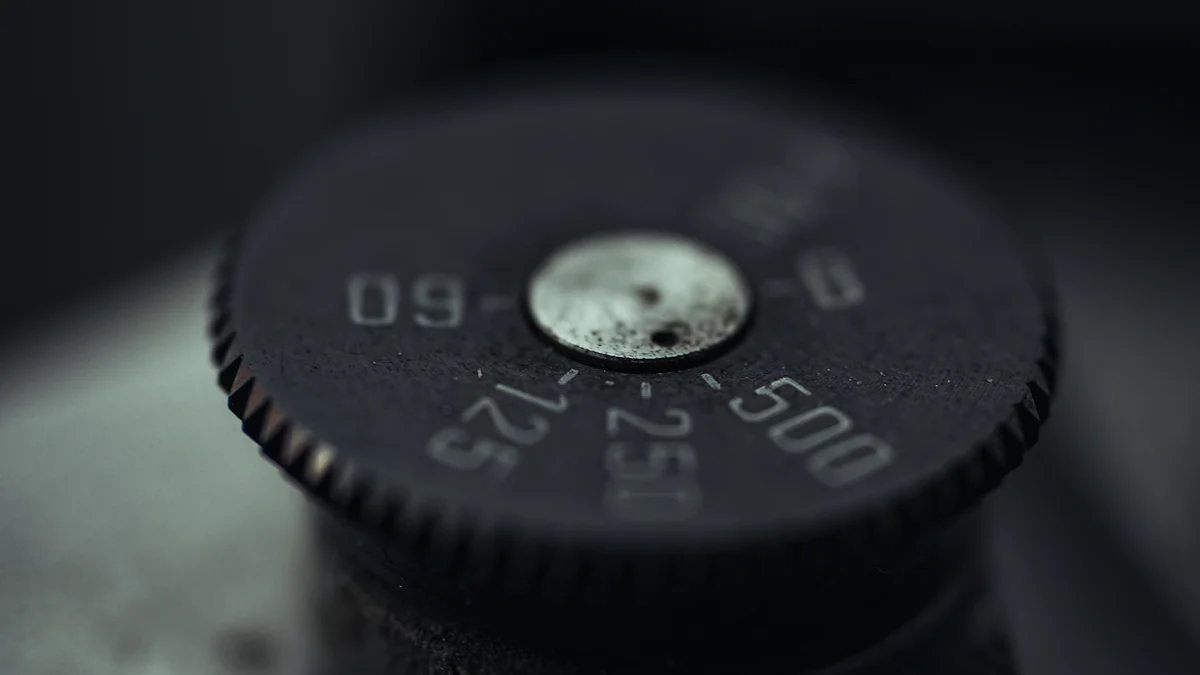
製造技術の進歩
化学蒸気蒸着(CVD)のイノベーションにより、スケーラビリティを向上させます.
研究者は、ピロリスティックカーボンコーティングのスケーラビリティを高めるために、化学蒸気蒸着(CVD)プロセスで重要な進歩を導入しました。 従来のCVD方式は、一貫した品質で大規模なコーティングを生産するのにしばしば限界に直面しました。 最近の革新は、蒸着パラメータの最適化と自動化システムの導入により、これらの課題に対処しました。 これらの改良は、より大きい基質を渡る均一コーティングを保障しま、産業スケールの適用の要求に応じます。 温度およびガスの流れ上の高められた制御はまたプロセスをより有効および費用効果が大きいように材料の無駄を減らしました。 これらの開発は、大量生産を必要とする産業のpyrolyticカーボンコーティングの可能性を拡大しました.
複雑な表面のためのナノエンジニアリングコーティングの開発.
ナノエンジニアリングコーティングの開発は、複雑な表面にピロリスティックカーボンの応用に革命を起こしています。 エンジニアは、多孔質材料やナノ構造などの複雑な幾何学と基板上のコーティングを堆積させる高度な技術を設計しました。 これらのコーティングは、優れた適合性を発揮し、チャレンジングな表面へのカバレッジさえ確保します。 また、ナノエンジニアリングは、密着性を高め、表面粗さを低減するなど、加工特性を合わせたコーティングの製作を可能にしました。 これらのイノベーションは、マイクロエレクトロニクスやバイオメディカルデバイスなどの分野におけるpyrolyticカーボンコーティングを使用して、精度と性能が重要である新しい可能性を確立しました.
高められた物質的な特性
機械的強度と耐摩耗性の改善.
最近の研究は、ピロリスティックカーボンコーティングの機械的強度と耐摩耗性を高めることに重点を置いています。 科学者たちは材料の微細構造を変形させ、負荷軸受け容量および変形への抵抗を改善しました。 これらの進歩は、その完全性を損なうことなく、より高いストレスレベルに耐えることができるコーティングで起因しました。 高められた耐久性はまた研摩の環境に露出した部品の寿命を延長しました。 これらの改良は、航空宇宙、自動車、その他の要求産業におけるアプリケーションのための信頼性の高い選択をpyrolyticカーボンコーティングします.
生物医学的な使用を含む特定の適用のための合わせられたコーティング.
特定の適用のためのpyrolyticカーボン コーティングを合わせることは革新の重要な区域になりました。 研究者はさまざまな企業の独特な条件を満たすためにカスタマイズされた特性が付いているコーティングを開発しました。 生物医学分野では、最適化された生体適合性および表面特性のコーティングは細胞の成長およびティッシュの統合を支えるために作成されました。 これらのカスタマイズされたコーティングは、人工心臓バルブや整形外科装置などの医療インプラントの性能を改善しました。 各用途の具体的なニーズに対応することで、これらのイノベーションは、ピロリスティックカーボンコーティングの汎用性を拡大しました.
新たなアプリケーション
次世代医療インプラントやデバイスへの統合.
Pyrolyticカーボンコーティングは次世代の医学の注入口および装置にその方法を見つけました。 その生体適合性および耐久性はそれに生物システムとの長期相互作用を要求する適用のための理想的な材料をします。 最近の研究は、ステントや専門医などのインプラントのパフォーマンスを向上させることにその有効性を実証しました。 摩耗および腐食に抵抗するコーティングの能力は取り替えのための必要性を減らすこれらの装置の長寿を保障します。 これらの進歩は現代生物医学工学の礎石としてpyrolyticカーボン コーティングを置いています.
高度の宇宙空間および電子システムの使用.
航空宇宙およびエレクトロニクス産業は、その例外的な特性のためにpyrolyticカーボンコーティングを埋め込んでいます。 航空宇宙では、コーティングの熱安定性と機械的強度は、タービンブレードや熱シールドなどの極端な条件にさらされるコンポーネントに適しています。 電子機器では、半導体やマイクロエレクトロニクス機器において、電気抵抗や耐薬品性に優れています。 これらのアプリケーションは、最先端の技術の課題に対処するために、ピロリスティックカーボンコーティングの汎用性を強調しています.
Pyrolyticカーボンコーティングの企業の適用

医療アプリケーション
人工的な中心弁および生物互換の注入のロール.
Pyrolyticカーボンコーティングは人工的な中心弁および生物互換の注入の開発の礎石になりました。 その生体適合性は、有害反応の危険性を減らす、人間の組織との安全な相互作用を保証します。 エンジニアは、このコーティングを使用して、人体内で動作するデバイスにとって重要な摩耗や腐食に抵抗する表面を作成します。 人工的な中心弁はコーティングが血の流れの一定した機械圧力に抗するので、その耐久性からかなり寄与します。 命を救う医療機器の信頼性と安全性を向上しました.
医療機器の長寿と性能を高めるメリット.
Pyrolyticカーボン展覧会によって塗られる医療機器は長寿および性能を高めました。 コーティングの耐薬品性は、インプラントの機能性を長期にわたって維持することを保証します。 この耐久性は、頻繁な交換の必要性を減らし、患者の成果を改善し、ヘルスケアコストを削減します。 また、コーティングによって提供される滑らかな表面は摩擦を最小限に抑え、ジョイント交換などの装置に不可欠です。 これらの利点は、近代医学の進歩にpyrolyticカーボンの変形の影響を強調します.
航空宇宙・自動車用途
高強度・高温環境でのご使用.
大気および自動車産業は極度な条件に露出される部品のためのpyrolyticカーボン コーティングに頼ります。 コーティングの熱安定性は、ジェットエンジンや排気システムなどの高温環境で確実に実行できます。 その機械強さは部品が失敗なしで重要な圧力に耐えることができることを保障します。 エンジニアは、タービンブレードやブレーキシステムなどの重要なコンポーネントにこのコーティングを適用し、性能と安全性を向上させます。 これらのアプリケーションは、高度なエンジニアリングの厳しい要求を満たす材料の能力を示しています.
航空宇宙・自動車産業向けの軽量で耐久性のあるコンポーネントへの貢献.
Pyrolyticカーボンコーティングの軽量な性質は、効率的で耐久性のあるコンポーネントの開発に貢献します。 部品全体の重量を減らすことで、車両や航空機の燃費効率を向上させることができます。 その耐久性は、これらのコンポーネントは、過酷な条件であっても、長期使用下でその完全性を維持することを保証します。 メーカーはこの技術を採用し、強度と重量の減少を組み合わせる部品を生産し、最適な性能を実現するために不可欠です。 このイノベーションは、持続可能性と効率の業界の目標をサポートしています.
エレクトロニクス・エネルギー
半導体およびマイクロエレクトロニクスの塗布.
Pyrolyticカーボンコーティングは、特に半導体およびマイクロエレクトロニクスのエレクトロニクス産業で重要な役割を果たします。 その低い電気抵抗および化学不活性はそれに敏感な電子部品を保護するための理想的な材料をします。 エンジニアはこのコーティングを使用して、トランジスタや集積回路などのデバイスのパフォーマンスと信頼性を高めます。 コーティングはまた環境要因に対して障壁を、電子システムの長寿を保障します提供します。 これらの特性は高度の電子工学の技術の生産でそれを必要としました.
エネルギー貯蔵および転換の技術のロール.
エネルギー貯蔵および転換の技術はpyrolyticカーボン コーティングの独特な特性から非常に寄与します。 その熱安定性と導電性は、電池と燃料電池の効率を改善します。 研究者は電極の性能を高めるためにこのコーティングを利用しましたり、より速い充満および排出周期を可能にします。 太陽電池パネルでは、コーティングは耐久性およびエネルギー転換の効率を高めます。 これらの進歩は、持続可能なエネルギーソリューションへの移行における重要な材料としてpyrolytic Carbonを配置しています.
Pyrolyticカーボンコーティングにおける挑戦と今後の方向性
Current Limitations
高生産コストとスケーラビリティの課題.
Pyrolyticカーボンコーティングの生産は頻繁に重要な費用を伴います。 有効な間、化学蒸気の沈殿(CVD)プロセスは、高いエネルギー入力および専門にされた装置を要求します。 これらの要因は、製造コストの上昇に貢献し、大規模な生産を経済的に困難にしています。 この技術を採用しようとする産業は、品質とコスト効率のバランスをとる上で困難に直面しています。 また、コーティングの性質を損なうことなく、産業要求を満たすためにプロセスをスケーリングすることは、持続的な障害を残します。 これらの問題に対処することは、さまざまな分野にわたってより広範な採用にとって不可欠です.
複雑な幾何学で均一なコーティングを達成することの困難.
複雑な表面に均一なpyrolyticカーボンコーティングを実現し、技術的な課題を提示します。 不規則な形状や多孔質構造のサブストレーションは、多くの場合、不均一な沈着をもたらします。 この矛盾は、特に精密を必要とするアプリケーションでコーティングのパフォーマンスを妥協することができます。 研究者は、適合性の向上に進んでいますが、すべての幾何学の全体で一貫した品質を確保することは困難です。 この制限を克服することは、バイオメディカルインプラントやマイクロエレクトロニクスなどの高度な技術でピロリスティックカーボンコーティングの使用を拡大するために不可欠です.
今後の研究機会
費用対効果の高い、持続可能な製造方法の探索.
費用対効果の高い製作方法の開発は、有望な道を提供します。 研究者は、CVDプロセス中にエネルギー消費を減らすための代替アプローチを検討しています。 素材の調達とプロセスの最適化におけるイノベーションは、品質を犠牲にすることなく生産コストを削減することを目指しています。 サステナビリティは、将来の進歩において重要な役割を果たしています。 廃棄物を最小限に抑え、環境に配慮した素材をグローバルに活用し、環境負荷低減に貢献します。 これらのイニシアチブは、限られたリソースを持つ業界によりアクセスしやすいpyrolyticカーボンコーティングを作ることができます.
新技術の多機能コーティングの開発.
多機能コーティングの需要は、産業が進化し続けています。 研究者は、特定の用途に合わせて強化された特性で、ピロリティックカーボンコーティングを作成することに注力しています。 例えば、電気伝導率の向上と断熱性に優れたコーティングは、エネルギー貯蔵システムに利益をもたらします。 生物医学分野では、細菌の付着に抵抗する間、細胞の成長を促進するように設計されているコーティングは重要な潜在性を保持します。 これらのイノベーションは、pyrolytic カーボンコーティングの汎用性を拡張し、最先端の技術への統合を可能にします.
変革の可能性
医療、航空宇宙、エネルギー分野に革命を起こす影響.
Pyrolyticのカーボン コーティングは複数の企業を渡るtransformativeの潜在性を保持します。 医学では、その生体適合性および耐久性は、インプラントやデバイスの設計を再定義できます。 航空宇宙アプリケーションは、極端な温度と機械的ストレスに耐える能力から恩恵を受ける。 エネルギー部門は、熱安定性と導電性を活用して、電池や燃料電池の効率性を高めています。 これらの進歩は近代的な技術的課題に対処するための礎石材料としてpyrolyticカーボンコーティングを置きます.
イノベーションの推進における学際的研究の重要性.
学際的な研究は、pyrolytic カーボンコーティング技術の進歩における重要な役割を果たしています。 マテリアルサイエンティスト、エンジニア、業界の専門家とのコラボレーションにより、イノベーションを促進 多様な分野の専門知識を組み合わせることで、研究者はより効果的に複雑な課題に取り組むことができます。 例えば、ナノテクノロジーとコーティング技術の融合は、すでに適合性と性能の進歩につながっています。 継続的な学際的な取り組みは、新しいソリューションの開発を推進し、ピロリスティックカーボンコーティングが技術の進歩の最前線に残っていることを保証します.
Pyrolyticのカーボン コーティングの技術は顕著な進歩を達成しましたり、企業を渡る多様性を示します。 そのユニークな特性は、医薬品、航空宇宙、電子機器の革新を主導し、性能と信頼性を高めています。 生産コストやスケーラビリティなどの課題に対処することは、より広範な採用にとって不可欠です。 研究者は、引き続き、持続可能な方法とカスタマイズされたソリューションを探求し、可能性を最大限に引き出しなければなりません。 この技術は、変化する力を保持し、重要なセクターの未来を形づけ、進行を促進します。 先導的なコラボレーションを促進することにより、業界は進化するニーズにお応えし、画期的な結果を実現するために能力を活用することができます.

